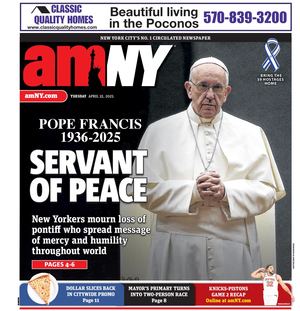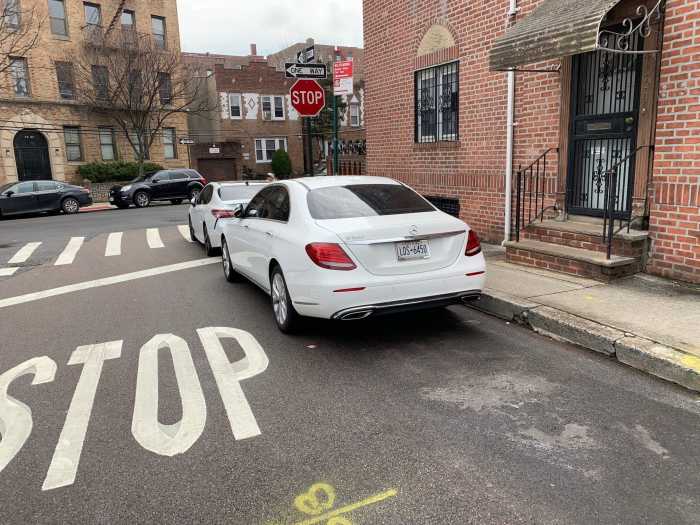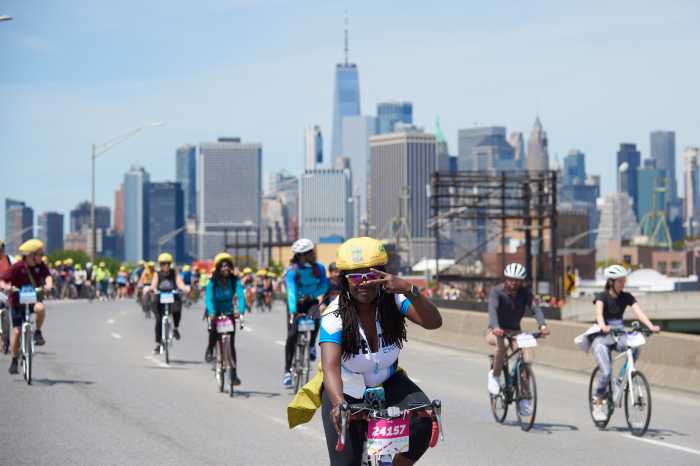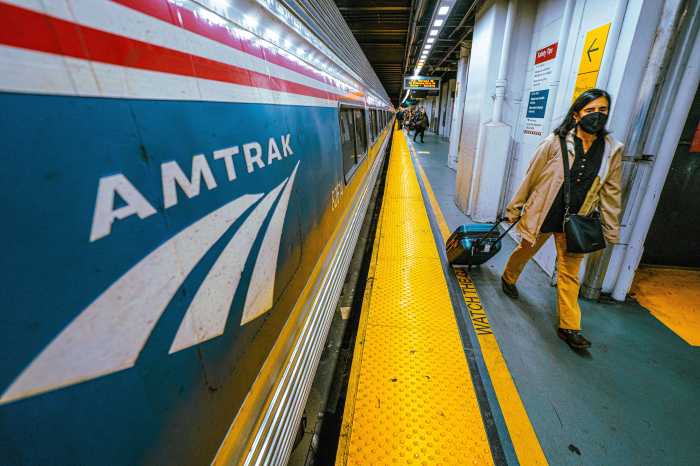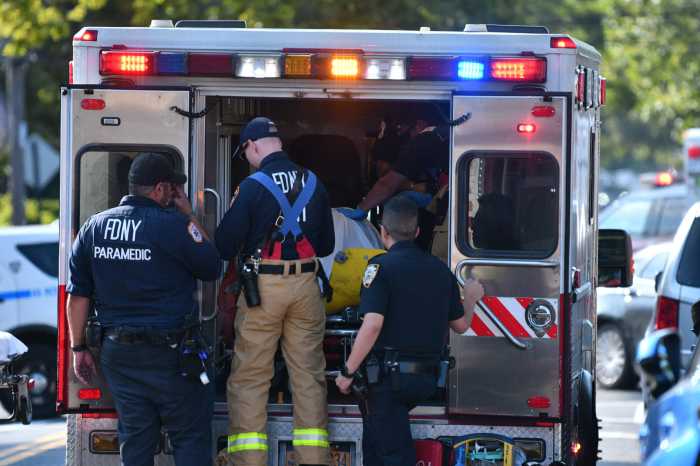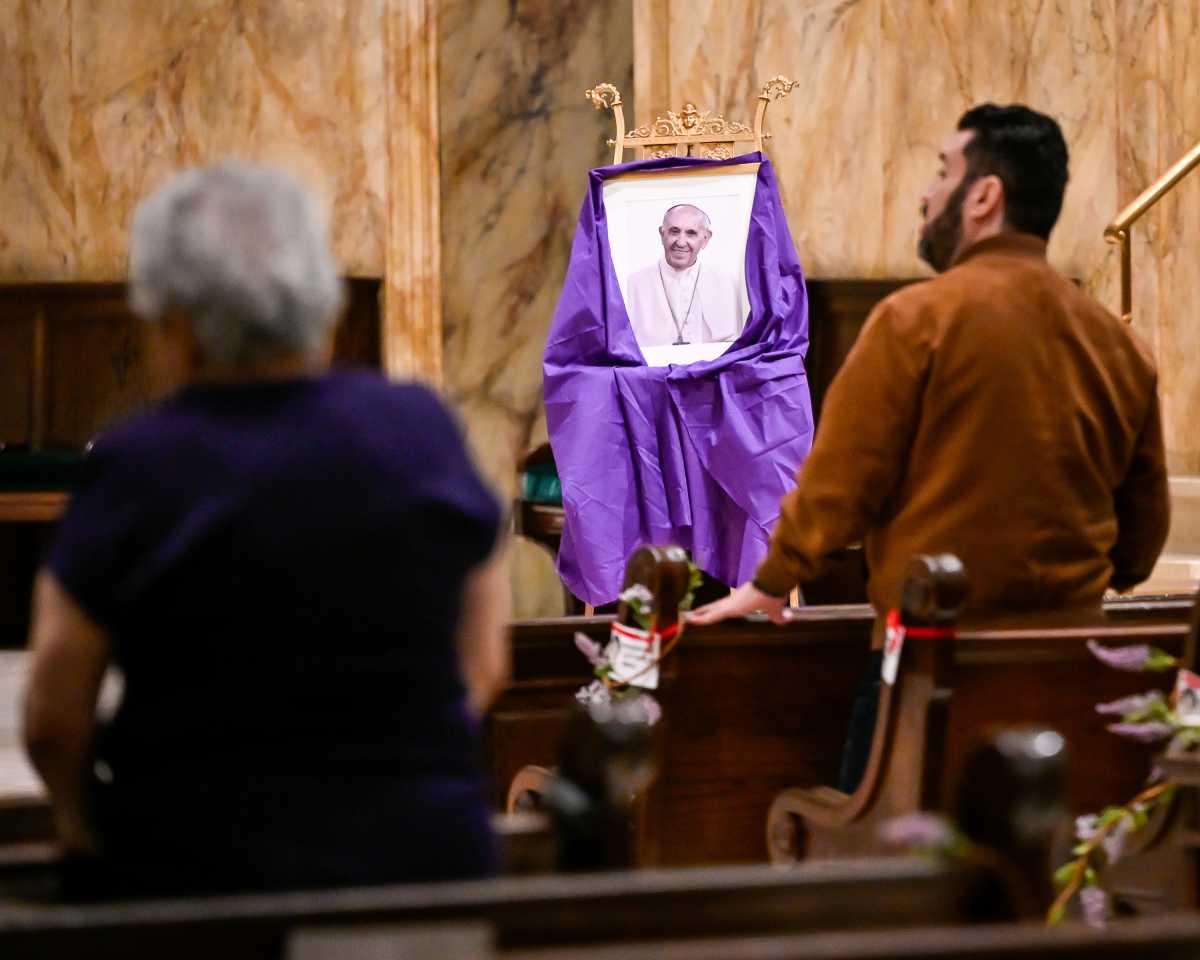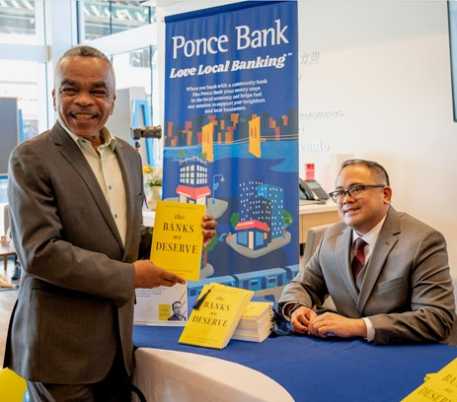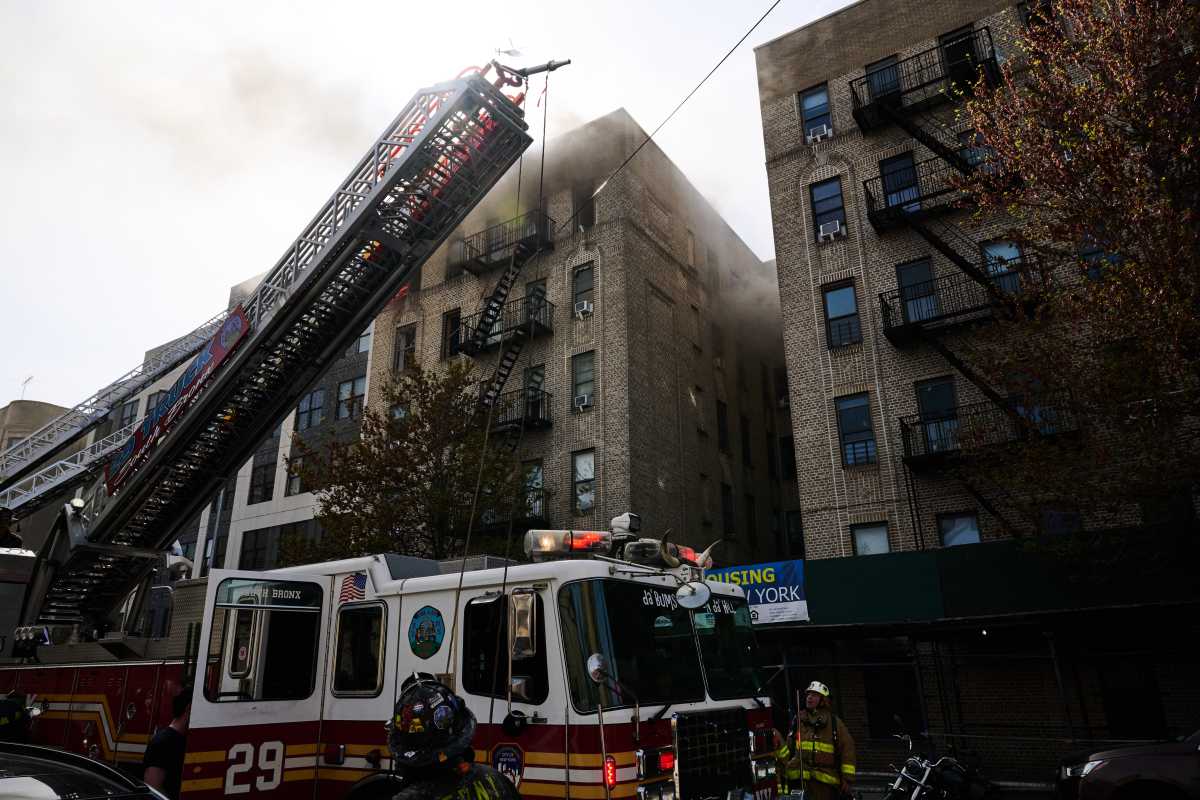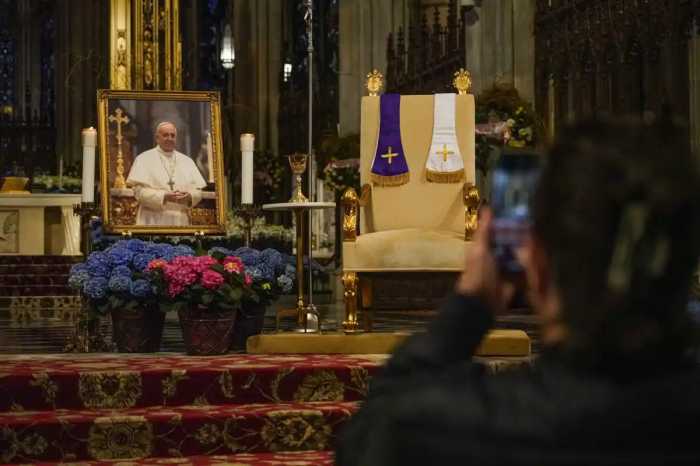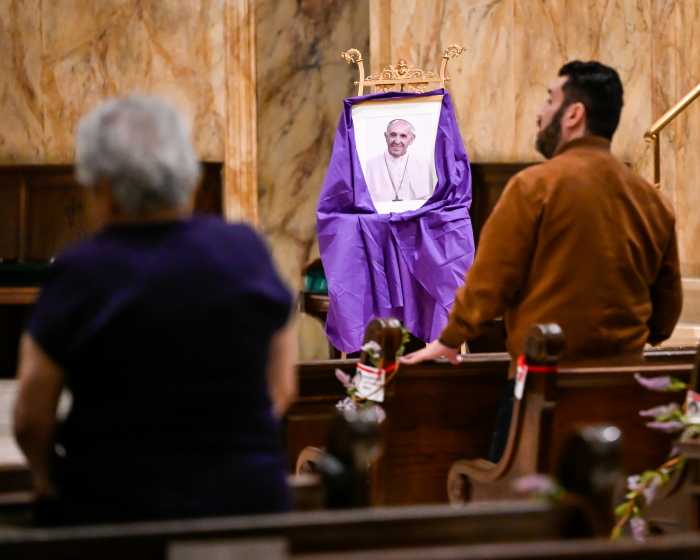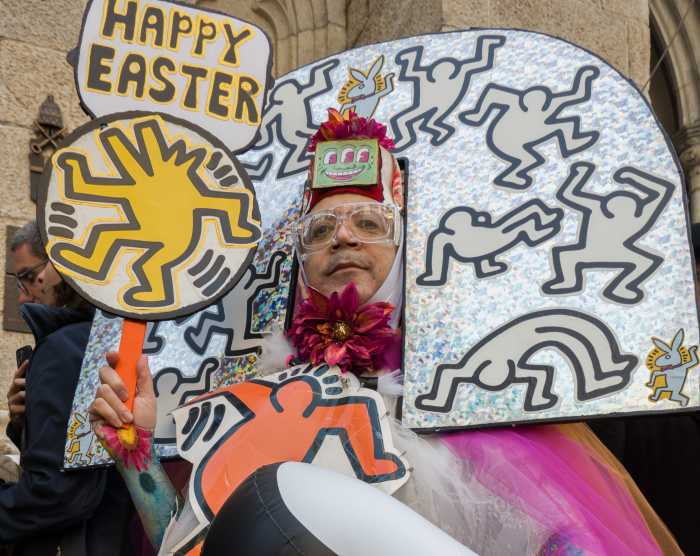-
 Come Thursday morning, commuters can enter and exit the main hall through the west side of the 56,000 square foot space and through the new southern passageway at Liberty and Church streets.
Come Thursday morning, commuters can enter and exit the main hall through the west side of the 56,000 square foot space and through the new southern passageway at Liberty and Church streets.
Inside, they will find a glass retractable skyline rising 96 feet in the air, flanked by 150 white “ribs” that form the wings of the structure and rise 168 feet in the air.
Santiago Calatrava, the project’s architect, said his team wanted to honor the lives lost on 9/11, and offer another symbol of the neighborhood’s resilience.
“It is a sign of reconstruction, recovery and even peace,” he told reporters during a tour of the space Tuesday.
” data-id=”111527844″ data-link=”https://amnewyork.wpengine.com/wp-content/uploads/2019/10/16170_image.jpg” class=”wp-image-1.11527844″/>
Photo Credit: Yeong-Ung Yang -
 About 50% of the space opens Thursday. In the coming weeks, the rest of the facility will open: the eastern and northern entrances and the Day Street connector to 11 subway lines. The Westfield World Trade Center, which will offer 75,000 square feet of retail space, will open sometime this year, according to the Port Authority.
About 50% of the space opens Thursday. In the coming weeks, the rest of the facility will open: the eastern and northern entrances and the Day Street connector to 11 subway lines. The Westfield World Trade Center, which will offer 75,000 square feet of retail space, will open sometime this year, according to the Port Authority.
Sanjive Vaidya, the chair of the department of architectural technology at New York City College of Technology, said the design hearkens back to the classical New York notion that big public spaces should be iconic. He predicted that the 250,000 daily commuters and thousands of other future visitors will take time to admire the work that went into the facility.
“It really is a spectacular space and I think what is critical about this is there needs to be a re-engagement. We have to bring back an emphasis on public space and the systems that serve us,” he said.
” data-id=”111527847″ data-link=”https://amnewyork.wpengine.com/wp-content/uploads/2019/10/21002_image.jpg” class=”wp-image-1.11527847″/>
Photo Credit: Yeong-Ung Yang -
 The hub comes with plenty of baggage, though. The project was originally announced as a $2 billion project in 2004 but construction didn’t begin until six years later, while being overrun by numerous delays.
The hub comes with plenty of baggage, though. The project was originally announced as a $2 billion project in 2004 but construction didn’t begin until six years later, while being overrun by numerous delays.Sarah Kaufman, the assistant director of the NYU Rudin Center for Transportation, said the money could have easily been used for other Port Authority transportation needs.
“I believe that they had the plans early on and should have been able to recognize the extravagant costs of it and trimmed it down,” she said.
Colin Cathcart, an associate professor of architecture at Fordham University, contended that the need to get the hub open as fast and efficiently as possible was more important than the symbolism.
“As an architect and urban designer, it’s a not worth the infrastructural money and effort that it took,” he said.
” data-id=”111527845″ data-link=”https://amnewyork.wpengine.com/wp-content/uploads/2019/10/21004_image.jpg” class=”wp-image-1.11527845″/>
Photo Credit: Yeong-Ung Yang -
 Although the Port Authority’s outgoing executive director Pat Foye told Politico that Oculus was “symbol of excess,” and that he was troubled with the huge costs, Steven Plate, the agency’s chief of major capital projects, said the design and associated costs were part the long process of building the hub during the reconstruction of ground zero.
Although the Port Authority’s outgoing executive director Pat Foye told Politico that Oculus was “symbol of excess,” and that he was troubled with the huge costs, Steven Plate, the agency’s chief of major capital projects, said the design and associated costs were part the long process of building the hub during the reconstruction of ground zero.
“There have been a lot of changes over 15 years,” he said. “As [the project] evolved we became more and more informed.”
Plate added that the hub will pay back its costs in seven years.
” data-id=”111527843″ data-link=”https://amnewyork.wpengine.com/wp-content/uploads/2019/10/16172_image.jpg” class=”wp-image-1.11527843″/>
Photo Credit: Yeong-Ung Yang -
 Jessica Lappin, the president of the Alliance for Downtown New York, had a similar optimistic view about Oculus’ success and likened it to the creation of Grand Central Terminal, which cost $2 billion dollars when inflation is factored in.
Jessica Lappin, the president of the Alliance for Downtown New York, had a similar optimistic view about Oculus’ success and likened it to the creation of Grand Central Terminal, which cost $2 billion dollars when inflation is factored in.
“No one thinks about that now. No one says we should take down Grand Central,” she said.
” data-id=”111527848″ data-link=”https://amnewyork.wpengine.com/wp-content/uploads/2019/10/16175_image.jpg” class=”wp-image-1.11527848″/>
Photo Credit: Yeong-Ung Yang
After more than a decade of delays and billions of dollars of excess cost, the first phase of the World Trade Center’s PATH station, called the Oculus, will open Thursday without a grand spectacle, VIPs or a ribbon cutting.
The $4 billion hub has been criticized as a symbol of governmental waste, but some lower Manhattan leaders hail it as a new destination for the neighborhood.
“The public is going to be able to decide for themselves, very soon,” on how they feel about the controversial facility, said Catherine McVay-Hughes, the chair of Manhattan’s Community Board 1.
